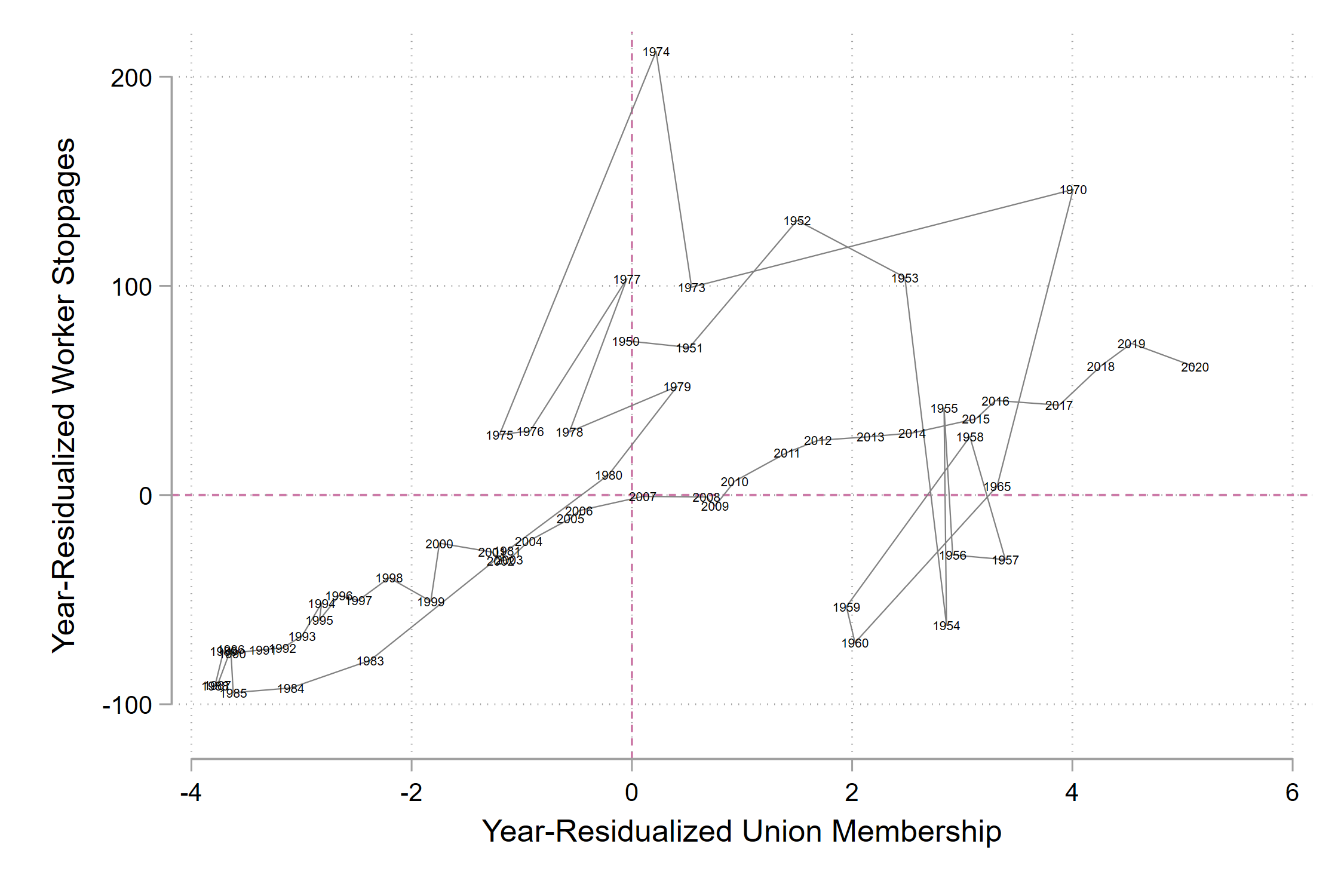The BLS maintains data on work stoppages. The big point is that there isn’t a labor movement, and there hasn’t been for some time. I keep hearing hopeful statements about labor’s reinvigoration, whether about Starbucks or Amazon or the Railroads. But I just don’t see it.
Below is private sector union membership over time
Union Membership declined from about 1/3 of private sector workers in the 1950s to about 6% today. There’s no evidence of any uptick in the last few years.
Let’s look at work stoppages
BLS keeps track of large work stoppages, I think 1000+ workers. With so few union members these days, I can’t imagine that there would be any uptick moved by small stoppages.
Reagan gets a lot of flack in sociology courses for implementing antilabor neoliberal logics. But don’t sleep on the Carter administration. Notice that the decline starts in the 1970s.
Number of days “idle” due to work stoppages are, unsurprisingly, down too.
No evidence of re-invigoration. Just evidence of no more labor movement. Obviously, the decline of union membership is deeply connected to reduced union activity.
Obviously, we see that we’re in an era of low union membership and low union activity.
Counterevidence
I’m mostly convinced that the labor movement is not reinvigorating. But here’s one possible piece of evidence against my pessimism. I estimated simple regression models predicting union membership with a linear year measure, and also estimated a simple linear regression model predicting work stoppages with a linear year measure. I computed residuals from each regression and plot them against each other. So we can see which years are relatively above or below the overall predicted line of demise.
You can see that years 2010-2020 are consistently “above” predicted linear trends of demise: There’s higher union membership rates than expected from 2010 onward based on a simple linear fit of decline, and higher rates of work stoppages in this period too. We can see the massive antilabor neoliberal era of 1980-2007 in the bottom left quadrant, where union power and numbers decelerated massively.
What if we went a little harder on ourselves and included a squared term for year? The decline isn’t linear, you know.
We still see the neoliberal antilabor era of 1980-2008ish play out in the bottom left quadrant (lower than expected union membership and work stoppages). We kind of see an unexpected rise of union power in the contemporary era, 2011 onward. We also see an era of big union membership without as much expected flaunting of clout (mid 1950s-mid 1960s), and era of big and active labor (1970s).
I’d overall say: maybe if you squint really hard you see unions not as dead today as you might expect. Turning to residualized trends we see a slight upward movement. But the absolute low levels of power and numbers is the biggest issue, in my opinion. And there, the US is very, very far away from a reinvigorated labor movement. Too bad. Unions are really good for ordinary and less powerful workers.





